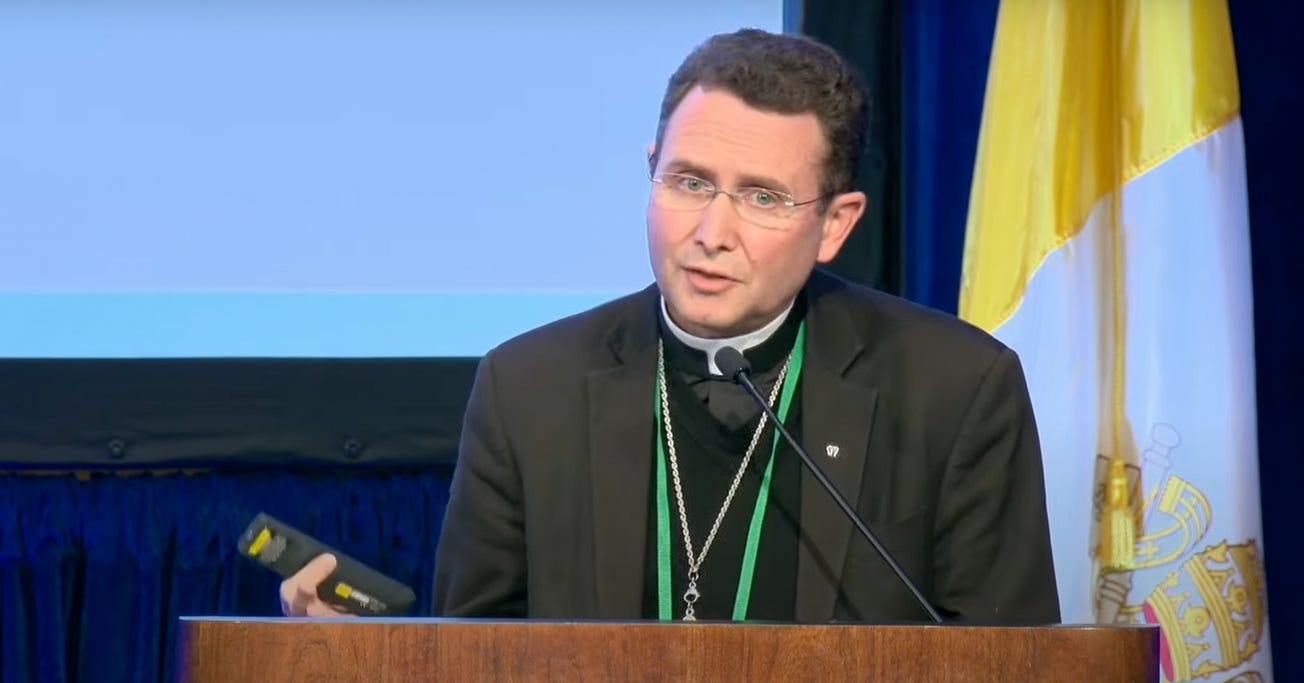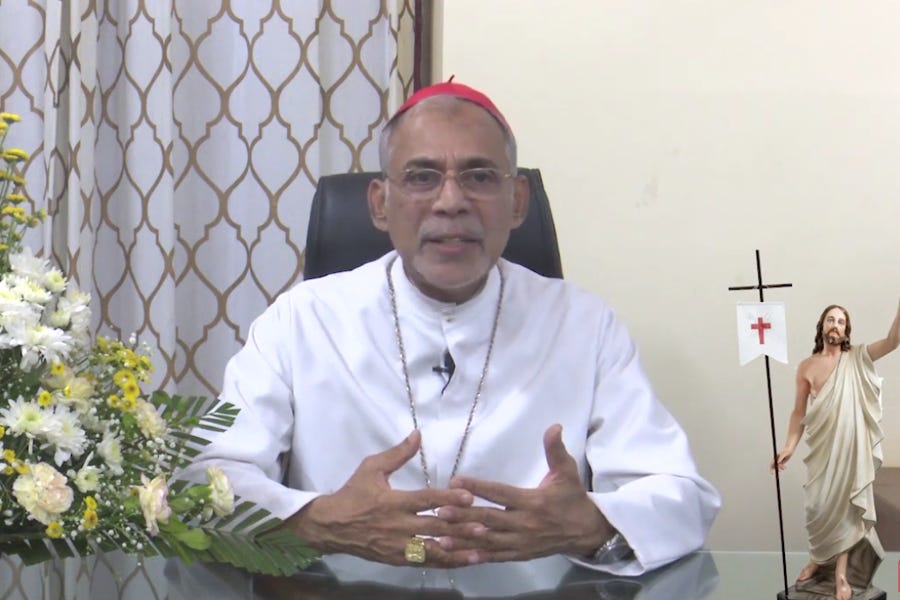On Monday, Pope Francis made a new change to canon law, one that will permit women to be admitted to the Church’s formal ministries of lector and acolyte. Here’s a look at what that means, and what it doesn’t.
Wait a minute, JD. Before you even start— there have been women lectors at my parish for as long as I can remember. What’s different now? Also, what’s an acolyte?
“Lector” is the formal designation for a person who reads the scripture during Mass or other liturgies of the Church — the word lector literally means “reader.”
In many parts of the world - including at St. Peter’s in Rome - women have served as readers during Mass for most of the last 50 years, and in some places longer, and the law of the Church permits that practice.
But there is a distinction in law between fulfilling the function of a lector and being formally designated to the “ministry” of a lector. And until Monday, canon law only permitted men to be formally “instituted,” or designated, to the “ministry” of lector — for a reason that will be explained below.
The same thing is true for acolytes. Acolytes help to prepare the altar and the sanctuary for Mass and other liturgies, they help make sure everything runs smoothly during liturgies, and they help clean up the Church after. Altar servers - or altar boys, if you’re old school - are a bit like assistants to the acolyte. In some places, acolytes are also permitted to expose or repose the Blessed Sacrament, or to fulfill other functions inside the Church.*
Not all parishes make use of acolytes, and in many places that do, both men and women serve in that function. And, in fact, in 1994 the Congregation for Divine Worship and Sacraments emphasized that diocesan bishops could permit women to serve in those functions. But again, until Pope Francis made the change, only men could formally be instituted to the “ministry” of acolyte.
So women could already have the job of a lector or acolyte, but not the title? Is that right? If so, what gives?
Beginning around the third century, the Church made use of a set of non-sacramental roles called “minor orders” as part of the formation of men to become deacons and priests. Those minor orders, together with a ceremonial practice called “clerical tonsure,” were like stepping stones to becoming a priest.
Beginning in the medieval world, receiving tonsure, the first of the stepping stones, formally designated a person a “cleric,” part of a class of people that included priests and deacons, but also others, who in some Catholic countries had not only ecclesiastical status, but also certain civil privileges — including, in some cases, the right to be tried for a crime only by an ecclesiastical court. It eventually became customary for some men of privilege and education to be tonsured, and thus become clerics, even if they were not in formation to become priests.
In 1917, the first Code of Canon Law made an effort to rein that practice in, and permitted only seminarians to be tonsured, and then to receive the other minor orders: porter, lector, exorcist, acolyte.
(The minor order of exorcist was not the same as the function of a priest-exorcist called in for major spiritual warfare in cases like possession. Also, there was another quasi-minor order, “subdeacon,” which was not considered part of the “big four,” but was another stepping stone, and has its own long, fascinating, and complicated history. We’ll save that for another day).
Eventually, some Church leaders came to believe that the “minor orders” had become a mostly ceremonial step in priestly formation, often all given on the same day and with no real connection to priestly training, and the Church decided to simplify the process even more. This issue was discussed by the fathers of the Second Vatican Council.
In 1972, Pope St. Paul VI issued a document that revised the whole system, doing away with the language of “minor orders,” and introducing instead the language of “ministries,” of which he said there would be two: lector and acolyte.
Those who received the ministries of lector and acolyte would not be considered clerics, but, the ministries would be used as steps in priestly formation, and would be understood to be an adaptation of the minor orders that had come before them — Pope Paul VI spoke of “preserving and adapting” what had come before, not doing away with it entirely.
The pope also added that individual bishops’ conferences could request permission from Rome to add other officially “instituted ministries” if they wanted to - including the roles of porter and exorcist, along with ministries of catechesis or charity. Very few conferences have actually made use of that offer, but the invitation still stands.
So....it was Pope Francis who did this. The guy with the Amazon synod. Surely this is a step toward women deacons, right?
That all depends on whom you ask. Both critics and supporters of the prospect of admitting women to the diaconate have suggested this might be a step in that direction.
Pope Francis himself has been clear that he has no plans to admit women to the ordained ministry of the diaconate — and he has questioned whether doing so is even possible, which remains a matter of debate among theologians.
The Church teaches definitively that women can not be ordained as priests, and many theologians hold that only men can be sacramentally ordained as deacons as well. While the pope hasn’t spoken definitively into that debate, he did say last year in Querida Amazonia that to admit women to Holy Orders “would in fact narrow our vision; it would lead us to clericalize women, diminish the great value of what they have already accomplished, and subtly make their indispensable contribution less effective.”
Some theologians have advocated for a kind of non-sacramental “deaconess” role for women - a non-sacramental role which seems to have existed for women in the early Church.
While Pope Francis has not absolutely ruled out the possibility, in Querida Amazonia he focused on other “forms of service” for women, which would entail “stability, public recognition and a commission from the bishop.”
That idea seems to be what Pope Francis had in mind.
In a letter the pope published alongside his motu proprio making the changes, Pope Francis wrote that “The choice of conferring these ministries on women as well, which entail stability, public recognition and the mandate on the part of the bishop, makes the participation of all in the work of evangelization more effective in the Church.”
The pope also seemed to emphasize the theological significance of collaboration between laity and clerics.
“…in addition to responding to what is asked for the mission in the present time and welcoming the testimony given by many women who have cared for and care for the service to the Word and the Altar, it will appear more clearly … that the ministries of lector and acolyte are rooted in the sacraments of baptism and confirmation. In this way, on the path that leads to diaconal and priestly ordination, those who are instituted lectors and acolytes will better understand that they are participants in a shared ministry with other baptized men and women,” the pope wrote.
So, practically, what’s going to change now?
The changes made by Pope Francis allow for the possibility that women be instituted formally as acolytes and lector, but don’t require it. So what happens now is up to conferences of bishops, and to the bishops in each diocese.
Right now, the ministries of lector and acolyte are mostly used in seminaries, as steps along the path of priestly and diaconal formation.
There are a handful - probably fewer than five - U.S. dioceses that have also admitted non-seminarian lay men to those ministries, mostly as an invitation to leadership roles in their parishes. Even in those places, women frequently serve as readers at Mass, and, less frequently, in an acolyte-type role.
In the U.S., the first step toward the possibility of installing women as lectors or acolytes would seem to be changing, by a vote, the language in a USCCB policy that speaks of installing laymen as lectors and acolytes.
If the USCCB changes its norm on the subject, it is possible the dioceses already formally designating men as lectors and acolytes might begin also designating women. It is also possible that dioceses that currently institute only seminarians to those ministries might begin using them more frequently, for both and women. Certainly, there will be interest in that possibility from some Catholics, and it will be up to each diocesan bishop to decide what to do in his diocese.
Another possibility is that bishops might designate as both lectors and acolytes women who lead parishes without a pastor, in the model of canon 517 §2.
There are some parts of the world that have traditionally allowed only men to serve as Extraordinary Ministers of Holy Communion; permitting both men and women to the formal liturgical ministries of lector and acolyte, which have some legal connection to designation as an extraordinary minister of the Eucharist, may have the effect of making it easier for women to bring the Eucharist to communities without a priest and to distribute it.
Since most diocesan bishops did not receive advanced notice of the pope’s policy change, it will likely be a few weeks, at least, before episcopal conferences and dioceses have concrete plans for how, and if, they might make use of the pope’s rule change.
*One bit of trivia, submitted by a reader, is that instituted acolytes can purify sacred vessels after the distribution of Holy Communion, while those serving in the function of acolyte cannot, according to paragraph 192 of the General Instruction for the Roman Missal. So a woman instituted in the ministry of acolyte could take on that function.




